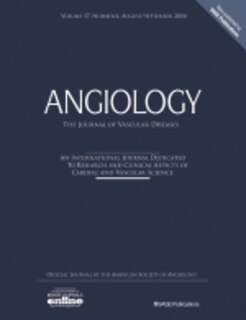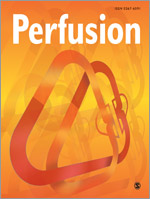
Angiotensin-converting-enzyme inhibitors are a class of medication used primarily for the treatment of high blood pressure and heart failure. They work by causing relaxation of blood vessels as well as a decrease in blood volume, which leads to lower blood pressure and decreased oxygen demand from the heart.

The endocrine system is a chemical messenger system comprising feedback loops of the hormones released by internal glands of an organism directly into the circulatory system, regulating distant target organs. In humans, the major endocrine glands are the thyroid gland and the adrenal glands. In vertebrates, the hypothalamus is the neural control center for all endocrine systems. The study of the endocrine system and its disorders is known as endocrinology. Endocrinology is a branch of internal medicine.

Renin, also known as an angiotensinogenase, is an aspartic protease protein and enzyme secreted by the kidneys in to the circulation in response to renal hypotension and hypernatremia; sympathetic nerve activation via β1-adrenoceptors also triggers the release though.

The renin–angiotensin system (RAS), or renin–angiotensin–aldosterone system (RAAS), is a hormone system that regulates blood pressure and fluid and electrolyte balance, as well as systemic vascular resistance.

Angiotensin is a peptide hormone that causes vasoconstriction and an increase in blood pressure. It is part of the renin–angiotensin system, which regulates blood pressure. Angiotensin also stimulates the release of aldosterone from the adrenal cortex to promote sodium retention by the kidneys.

Aldosterone, the main mineralocorticoid hormone, is a steroid hormone produced by the zona glomerulosa of the adrenal cortex in the adrenal gland. It is essential for sodium conservation in the kidney, salivary glands, sweat glands and colon. It plays a central role in the homeostatic regulation of blood pressure, plasma sodium (Na+), and potassium (K+) levels. It does so primarily by acting on the mineralocorticoid receptors in the distal tubules and collecting ducts of the nephron. It influences the reabsorption of sodium and excretion of potassium (from and into the tubular fluids, respectively) of the kidney, thereby indirectly influencing water retention or loss, blood pressure and blood volume. When dysregulated, aldosterone is pathogenic and contributes to the development and progression of cardiovascular and kidney disease. Aldosterone has exactly the opposite function of the atrial natriuretic hormone secreted by the heart.

Atrial natriuretic peptide (ANP) or atrial natriuretic factor (ANF) is a natriuretic peptide hormone secreted from the cardiac atria that in humans is encoded by the NPPA gene. Natriuretic peptides are a family of hormone/paracrine factors that are structurally related. The main function of ANP is causing a reduction in expanded extracellular fluid (ECF) volume by increasing renal sodium excretion. ANP is synthesized and secreted by cardiac muscle cells in the walls of the atria in the heart. These cells contain volume receptors which respond to increased stretching of the atrial wall due to increased atrial blood volume.
The angiotensin II receptors, (AGTR1) and (AGTR2), are a class of G protein-coupled receptors with angiotensin II as their ligands. They are important in the renin–angiotensin system: they are responsible for the signal transduction of the vasoconstricting stimulus of the main effector hormone, angiotensin II.
Essential hypertension is the form of hypertension that by definition has no identifiable cause. It is the most common type of hypertension, affecting 95% of hypertensive patients; it tends to be familial and is likely to be the consequence of an interaction between environmental and genetic factors. Prevalence of essential hypertension increases with age, and individuals with relatively high blood pressure at younger ages are at increased risk for the subsequent development of hypertension. Hypertension can increase the risk of cerebral, cardiac, and renal events.

Endothelins are peptides with receptors and effects in many body organs. Endothelin constricts blood vessels and raises blood pressure. The endothelins are normally kept in balance by other mechanisms, but when overexpressed, they contribute to high blood pressure (hypertension), heart disease, and potentially other diseases.

Angiotensin II receptor type 1 or AT1 receptor is the best characterized angiotensin receptor. It has vasopressor effects and regulates aldosterone secretion. It is an important effector controlling blood pressure and volume in the cardiovascular system. Angiotensin II receptor antagonists are drugs indicated for hypertension, diabetic nephropathy and congestive heart failure.

Renin inhibitors are pharmaceutical drugs inhibiting the activity of renin that is responsible for hydrolyzing angiotensinogen to angiotensin I, which in turn reducing the formation of angiotensin II that facilitates blood pressure.

Pathophysiology is a branch of medicine which explains the function of the body as it relates to diseases and conditions. The pathophysiology of hypertension is an area which attempts to explain mechanistically the causes of hypertension, which is a chronic disease characterized by elevation of blood pressure. Hypertension can be classified by cause as either essential or secondary. About 90–95% of hypertension is essential hypertension. Some authorities define essential hypertension as that which has no known explanation, while others define its cause as being due to overconsumption of sodium and underconsumption of potassium. Secondary hypertension indicates that the hypertension is a result of a specific underlying condition with a well-known mechanism, such as chronic kidney disease, narrowing of the aorta or kidney arteries, or endocrine disorders such as excess aldosterone, cortisol, or catecholamines. Persistent hypertension is a major risk factor for hypertensive heart disease, coronary artery disease, stroke, aortic aneurysm, peripheral artery disease, and chronic kidney disease.

Phlebology, The Journal of Venous Disease, is a peer-reviewed medical journal covering research on vascular disease. It is published by Sage Publications and is an official journal of the American College of Phlebology, the Australasian College of Phlebology, the Venous Forum of the Royal Society of Medicine, the European Venous Forum, and the Benelux Society. The editor-in-chief is Alun Davies.

Angiology is a peer-reviewed academic journal that publishes papers in the field of Vascular disease. The journal's editor is Dimitri P. Mikhailidis, M.D., FRCPATH. It has been in publication since 1950 and is currently published by SAGE Publications.

Clinical and Applied Thrombosis/Hemostasis is a peer-reviewed medical journal covering research in the field of hematology. The editor-in-chief is Charles A. Carter, PharmD, MBA. It was established in 1995 and is currently published by Sage Publications.

Diabetes and Vascular Disease Research is a peer-reviewed academic journal that publishes papers in the field of Peripheral vascular disease. The journal's editor is Peter Grant. It has been in publication since 2004 and is currently published by SAGE Publications.

Perfusion is a peer-reviewed academic journal that publishes papers in the field of Cardiology. The journal's editor is Prakash P. Punjabi. It has been in publication since 1986 and is currently published by SAGE Publications.

Vascular and Endovascular Surgery is a monthly peer-reviewed medical journal that covers the field of vascular surgery. It was established in 1967 and is published by Sage Publications. The editor-in-chief is Thomas Maldonado.

L-163,491 is a drug which acts as a partial agonist of angiotensin II receptor type 1, and with lower affinity as an agonist of angiotensin II receptor type 2, mimicking the action of angiotensin II. Its practical applications to date have been limited to scientific research into the function of the angiotensin receptor system, but it has been suggested as a potential therapeutic agent for the treatment of inflammation of the lungs associated with certain viral diseases such as COVID-19.


















